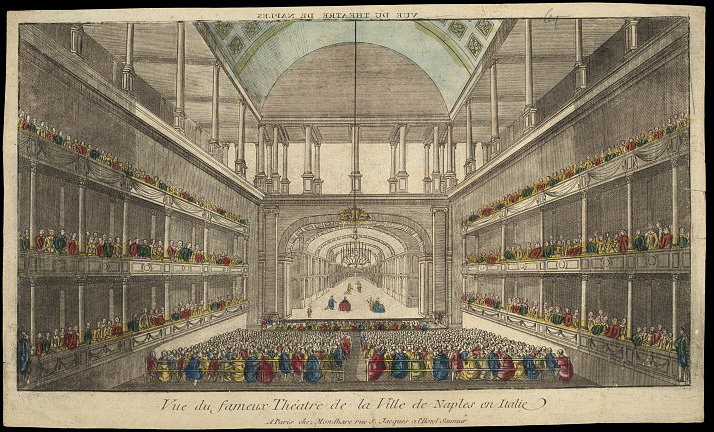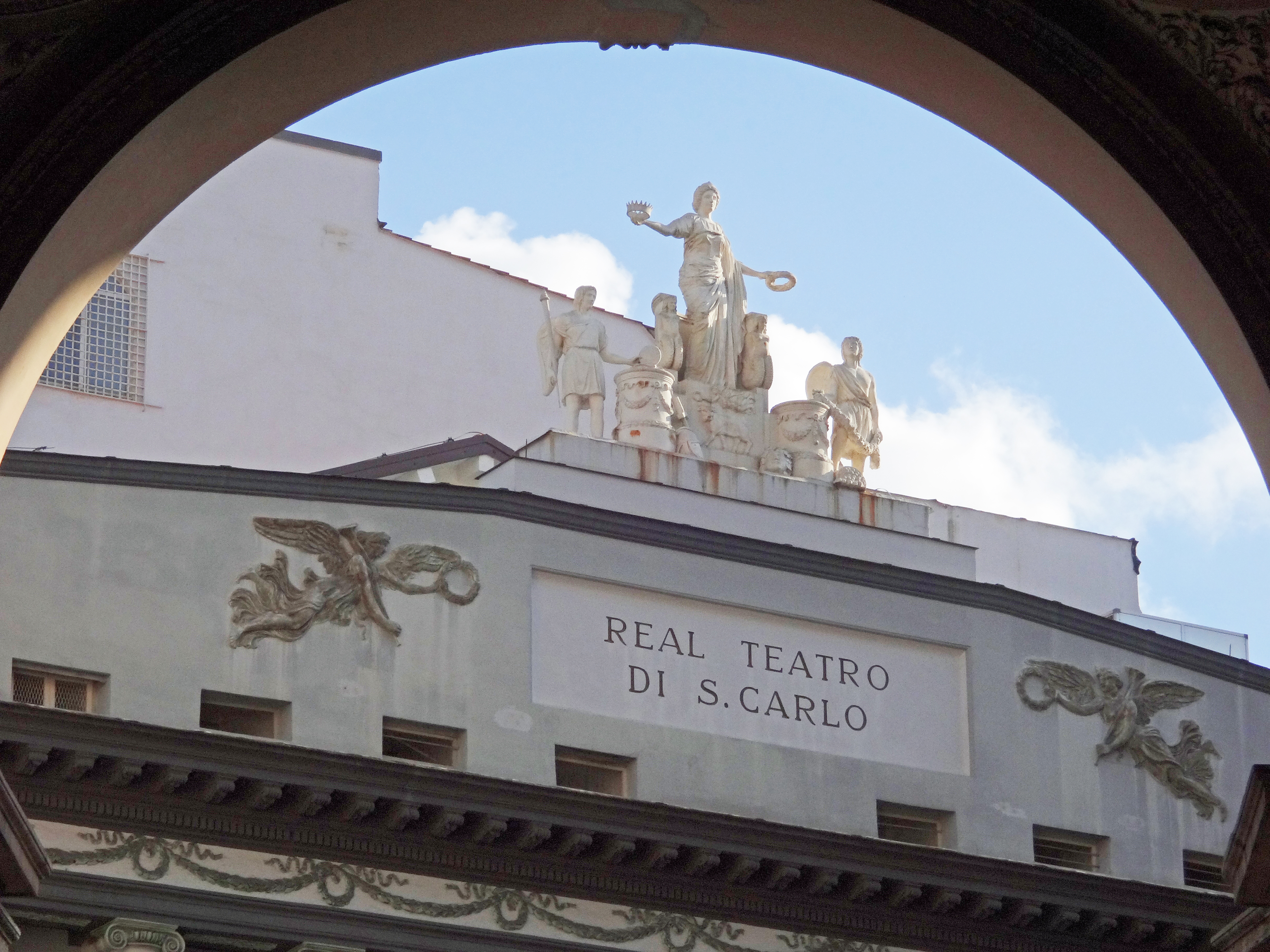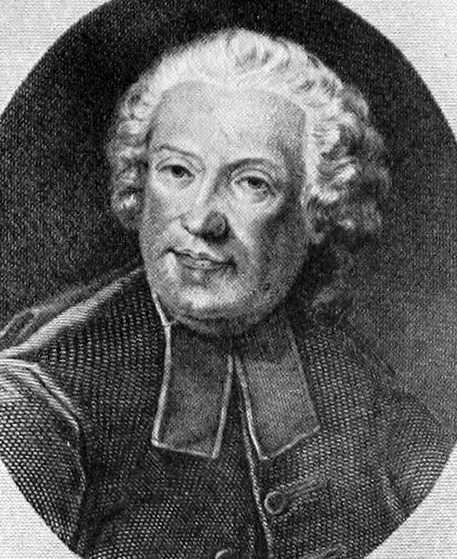|
Early Theaters In Naples
Theatres for diverse musical and dramatic presentations began to open in Naples, Italy, in the mid-16th century as part of the general Spanish cultural and political expansion into the kingdom of Naples, which had just become a vicerealm of Spain. None of the early theaters still function as such, having been replaced by later facilities from the mid-18th century onwards. Neapolitan theatres first built in the 16th and 17th centuries include: Teatro della Commedia Vecchia Built around 1550, the Commedia Vecchia was the first public theatre in Naples. It was the professional home to acting troupes from Spain "playing the provinces," and it provided a stage for the improvised antics of the masked and costumed figures in the then innovative Italian commedia dell'arte. In its heyday, the theatre was so successful that the government put a tax on their proceeds to finance the Casa dei Incurabili, a home for people with incurable diseases. The theatre was acquired in 1587 by a consortium ... [...More Info...] [...Related Items...] OR: [Wikipedia] [Google] [Baidu] |
Naples
Naples (; it, Napoli ; nap, Napule ), from grc, Νεάπολις, Neápolis, lit=new city. is the regional capital of Campania and the third-largest city of Italy, after Rome and Milan, with a population of 909,048 within the city's administrative limits as of 2022. Its province-level municipality is the third-most populous metropolitan city in Italy with a population of 3,115,320 residents, and its metropolitan area stretches beyond the boundaries of the city wall for approximately 20 miles. Founded by Greeks in the first millennium BC, Naples is one of the oldest continuously inhabited urban areas in the world. In the eighth century BC, a colony known as Parthenope ( grc, Παρθενόπη) was established on the Pizzofalcone hill. In the sixth century BC, it was refounded as Neápolis. The city was an important part of Magna Graecia, played a major role in the merging of Greek and Roman society, and was a significant cultural centre under the Romans. Naples served a ... [...More Info...] [...Related Items...] OR: [Wikipedia] [Google] [Baidu] |
Teatro Di San Carlo
The Real Teatro di San Carlo ("Royal Theatre of Saint Charles"), as originally named by the Bourbon monarchy but today known simply as the Teatro (di) San Carlo, is an opera house in Naples, Italy, connected to the Royal Palace and adjacent to the Piazza del Plebiscito. It is the oldest continuously active venue for opera in the world, having opened in 1737, decades before either Milan's La Scala or Venice's La Fenice."The Theatre and its history" on the Teatro di San Carlo's official website. (In English). Retrieved 23 December 2013 The opera season runs from late November to July, with the ballet season taking place from December to early June. The house once had a seating capacity of 3,285, but has now been reduced to 1,386 seats. Given its size, structure and antiquity, it was the model for theatres that were l ... [...More Info...] [...Related Items...] OR: [Wikipedia] [Google] [Baidu] |
Lists Of Theatres
This is a list of theatre list articles on Wikipedia. Theatre or theater is a collaborative form of fine art that uses live performers to present the experience of a real or imagined event before a live audience in a specific place. The performers may communicate this experience to the audience through combinations of gesture, speech, song, music, and dance. Elements of design and stagecraft are used to enhance the physicality, presence and immediacy of the experience.M. Carlson, ''Journal of Dramatic Theory and Criticism'' 2011 By city * List of theatres in Bangkok * List of theatres and concert halls in Barcelona * List of former theatres in Boston * List of theatres in Budapest * List of theatres in Bristol * List of theaters in Chicago * List of theatres in Hamburg * List of former theatres in London * List of theatres in Louisville, Kentucky * List of theatres and entertainment venues in Lyon * List of theatres in Munich * Early theatres in Naples * List of theaters in ... [...More Info...] [...Related Items...] OR: [Wikipedia] [Google] [Baidu] |
Theatres In Naples
Theatre or theater is a collaborative form of performing art that uses live performers, usually actors or actresses, to present the experience of a real or imagined event before a live audience in a specific place, often a stage. The performers may communicate this experience to the audience through combinations of gesture, speech, song, music, and dance. Elements of art, such as painted scenery and stagecraft such as lighting are used to enhance the physicality, presence and immediacy of the experience. The specific place of the performance is also named by the word "theatre" as derived from the Ancient Greek θέατρον (théatron, "a place for viewing"), itself from θεάομαι (theáomai, "to see", "to watch", "to observe"). Modern Western theatre comes, in large measure, from the theatre of ancient Greece, from which it borrows technical terminology, classification into genres, and many of its themes, stock characters, and plot elements. Theatre artist Patrice Pavi ... [...More Info...] [...Related Items...] OR: [Wikipedia] [Google] [Baidu] |
Opera Houses In Italy
Opera is a form of theatre in which music is a fundamental component and dramatic roles are taken by singers. Such a "work" (the literal translation of the Italian word "opera") is typically a collaboration between a composer and a librettist and incorporates a number of the performing arts, such as acting, scenery, costume, and sometimes dance or ballet. The performance is typically given in an opera house, accompanied by an orchestra or smaller musical ensemble, which since the early 19th century has been led by a conductor. Although musical theatre is closely related to opera, the two are considered to be distinct from one another. Opera is a key part of the Western classical music tradition. Originally understood as an entirely sung piece, in contrast to a play with songs, opera has come to include numerous genres, including some that include spoken dialogue such as ''Singspiel'' and ''Opéra comique''. In traditional number opera, singers employ two styles of singing: ... [...More Info...] [...Related Items...] OR: [Wikipedia] [Google] [Baidu] |
Graziella Al Porto Napoli
The church of the Graziella al Porto Napoli or Santa Maria delle Grazie al Porto Napoli is a small Roman Catholic church in Naples, Italy. The church is just behind the church of Pietà dei Turchini, on vico Graziella al Porto. It is accessible through narrow alleys from via Medina, along the church of San Diego all'Ospedaletto and the former Royal Conservatory, but also by pedestrian alleys from via Guglielmo San Felice and via De Pretis. It is located in the rione San Giuseppe Carità. In 1737, the architect Angelo Carasale, in order to signal his gratitude to the providence granted by the Virgin, decided to erect this church, initially named Santa Maria delle Grazie. Carasale had found success when he was granted direction of the Teatro San Bartolomeo by King Charles III. The church was in the custody of the Mercedarian order until 1801, when it was transferred to the Confraternity of Santi Bernardo e Margherita. That group merged in 1859 with the Confraternity of Santa Maria ... [...More Info...] [...Related Items...] OR: [Wikipedia] [Google] [Baidu] |
Domenico Sarro
Domenico Natale Sarro, also Sarri (24 December 1679 – 25 January 1744) was an Italian composer. Born in Trani, Apulia, he studied at the Neapolitan conservatory of S. Onofrio. He composed extensively in the early 18th century. His opera ''Didone abbandonata'', premiered on 1 February 1724 at the Teatro San Bartolomeo in Naples, was the first setting of a major libretto by Pietro Metastasio. He is best remembered today as the composer of '' Achille in Sciro'', the opera that was chosen to open the new Teatro di San Carlo in 1737. Of his many intermezzi, 'Dorina e Nibbio' or L'impresario delle Isole Canarie (1724) has had an extensive performance history. With a libretto by Pietro Metastasio (his only comic libretto), it was performed often and imitated internationally (with versions by Albinoni, Gasparini, Leo, Martini and others). In recent years it was performed in the State Theatre of Stuttgart, the Bochum Symphony as well as the Semperoper The Semperoper () is the opera h ... [...More Info...] [...Related Items...] OR: [Wikipedia] [Google] [Baidu] |
Metastasio
Pietro Antonio Domenico Trapassi (3 January 1698 – 12 April 1782), better known by his pseudonym of Pietro Metastasio (), was an Italian poet and librettist, considered the most important writer of ''opera seria'' libretti. Early life Metastasio was born in Rome, where his father, Felice Trapassi, a native of Assisi, had taken service in the Corsican regiment of the papal forces. Felice married a Bolognese woman, Francesca Galasti, and became a grocer in the ''Via dei Cappellari''. The couple had two sons and two daughters; Pietro was the younger son. Pietro, while still a child, is said to have attracted crowds by reciting impromptu verses on a given subject. On one such occasion in 1709, two men of distinction stopped to listen: Giovanni Vincenzo Gravina, famous for legal and literary erudition as well as his directorship of the Arcadian Academy, and Lorenzini, a critic of some note. Gravina was attracted by the boy's poetic talent and personal charm, and made Pietro h ... [...More Info...] [...Related Items...] OR: [Wikipedia] [Google] [Baidu] |
L'impresario Delle Isole Canarie
' (The impresario from the Canary Islands), also known as ''L'impresario delle Canarie'' or ''Dorina e Nibbio'', is a satirical opera intermezzo libretto attributed to Metastasio (Pietro Antonio Domenico Trapassi), written in 1724 to be performed between the acts of Metastasio's opera seria '' Didone abbandonata''. The first performance of the work was on February 1, 1724, in Naples, Italy, at Teatro San Bartolomeo. The first composer to set this libretto to music was Domenico Sarro, also known by the name ''Sarri'', who also revised the work in 1730. The role of Dorina was first sung by the contralto Santa Marchesini, and Nibbio by the basso buffo singer Gioacchino Corrado. Later versions of this libretto appear with the titles ''L'impresario'', ''L'impresario e la cantante'' and others. Plot The following is the plot as in the 1724 libretto. Later versions are different but all maintain the basic comic situation. Persons: Dorina, an opera singer; Nibbio, an impresario fro ... [...More Info...] [...Related Items...] OR: [Wikipedia] [Google] [Baidu] |
Intermezzo
In music, an intermezzo (, , plural form: intermezzi), in the most general sense, is a composition which fits between other musical or dramatic entities, such as acts of a play or movements of a larger musical work. In music history, the term has had several different usages, which fit into two general categories: the opera intermezzo and the instrumental intermezzo. Renaissance intermezzo The Renaissance intermezzo was also called the intermedio. It was a masque-like dramatic piece with music, which was performed between the acts of a play at Italian court festivities on special occasions, especially weddings. By the late 16th century, the intermezzo had become the most spectacular form of dramatic performance, and an important precursor to opera. The most famous examples were created for Medici weddings in 1539, 1565, and 1589. In Baroque Spain the equivalent entremés or paso was a one-act comic scene, often ending in music and dance, between ''jornadas'' (acts) of a play.Le ... [...More Info...] [...Related Items...] OR: [Wikipedia] [Google] [Baidu] |
Didone Abbandonata
''Didone abbandonata'' is an opera libretto in three acts by Pietro Metastasio. It was his first original work and was set to music by Domenico Sarro in 1724. The opera was accompanied by the intermezzo '' L'impresario delle Isole Canarie'', also by Metastasio. During the century that followed, it was set more than 50 times by other composers such as Nicola Porpora (1725), Leonardo Vinci (1726), Baldassare Galuppi (1740), Johann Adolph Hasse (1742), Niccolò Jommelli (1747), Tommaso Traetta (1757), Giuseppe Sarti (1762), Niccolò Piccinni Niccolò Piccinni (; 16 January 1728 – 7 May 1800) was an Italian composer of symphonies, sacred music, chamber music, and opera. Although he is somewhat obscure today, Piccinni was one of the most popular composers of opera—particularly th ... (1770), Saverio Mercadante (1823). External links Complete libretto Libretti by Metastasio Operas based on the Aeneid Italian-language operas Operas Operas based on classical my ... [...More Info...] [...Related Items...] OR: [Wikipedia] [Google] [Baidu] |




